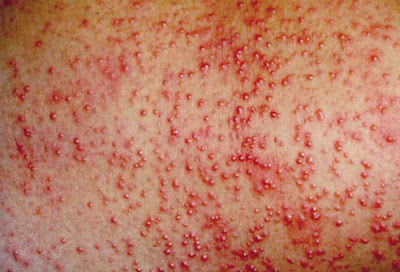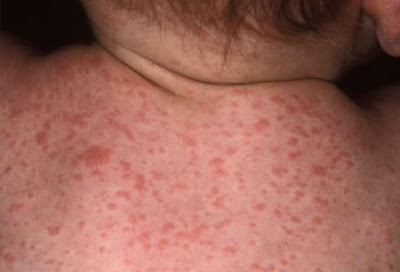Childhood Skin Overview

Wondering what that rash, welt, or bump on your child’s skin is? Infection, allergies, and temperature extremes are often behind the skin conditions seen in babies and children and many are minor and easily treated. You can learn to recognize some of the most common conditions — but remember: Always consult a doctor for proper diagnoses and treatment.
Ringworm
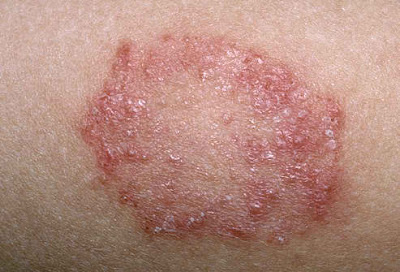
Worms don’t cause ringworm. Instead, this skin infection is caused by a fungus living off dead skin, hair, and nail tissue. Starting as a red, scaly patch or bump, it develops into an itchy red ring with raised, blistery, or scaly borders. Ringworm is passed on by skin-to-skin contact with a person or animal, and by sharing items like towels or sports gear. Most ringworm infections can be treated with antifungal creams.
Fifth Disease (‘Slapped Cheek’)
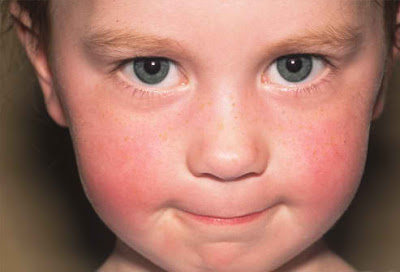
A contagious and usually mild illness that passes in a couple weeks, fifth disease starts with flu-like symptoms, followed by a face and body rash. Spread by coughing and sneezing, it’s most contagious the week before the rash appears. Treatment includes rest, fluids, and pain relievers (do not give aspirin to children), but watch for signs of more serious illness. If your child has fifth disease and you are pregnant, contact your doctor.
Chickenpox
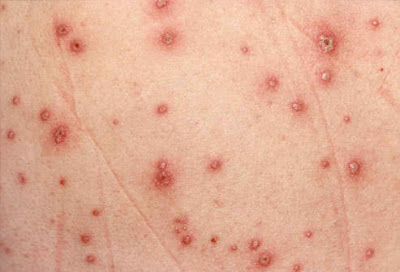
Although chickenpox rash was a common rash when most current adults were children, it isn’t commonly seen in children these days because of the chickenpox vaccine. Very contagious, chickenpox spreads easily, leaving an itchy rash and red spots or blisters all over the body. Chickenpox spots go through stages: blistering, bursting, drying, and crusting. Chickenpox can lead to serious complications such as pneumonia, brain damage, or death.
Impetigo
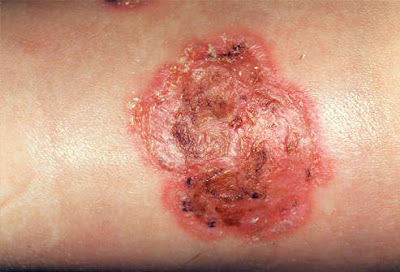
A contagious infection usually caused by staphylococcal or streptococcal bacteria, impetigo causes red sores or blisters that can break open, ooze, and develop a yellow-brown crust. Sores can occur anywhere on the body but usually appear around the mouth and nose. Impetigo can be spread to others through close contact or by sharing items like towels and toys. Scratching can also spread it to other parts of the body. Antibiotic ointment usually cures it. Antibiotic pills may be needed.
Warts
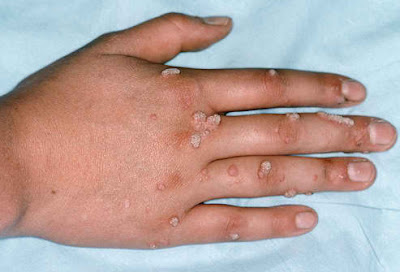
Skin growths caused by contact with the contagious human papillomavirus, warts can spread from person-to-person or via contact with an object used by a person with the virus. Common warts are most often found on fingers and hands. Prevent the spread of warts by not picking them, covering them with bandages, and not biting your nails or cuticles. In most cases warts are harmless, painless, and go away on their own. If they persist, treatments include freezing, surgery, lasers, and chemicals.
Heat Rash (‘Prickly Heat’)
The result of blocked sweat ducts, heat rash looks like small red or pink pimples. Appearing over an infant’s head, neck, and shoulders, the rash is often caused when well-meaning parents dress baby too warmly, but it can happen to any infant in very hot weather. A baby should be dressed with only one more layer than an adult; though their feet and hands may feel cool to the touch, this is usually not a problem.
Contact Dermatitis
Contact dermatitis is a skin reaction caused by touching a substance, such as food, soap, or the oil of plants like poison ivy, sumac, or oak. The rash usually starts within 48 hours after exposure. Minor cases may cause mild skin redness or a rash of small red bumps, while severe reactions can cause swelling, redness, and larger blisters. Contact dermatitis is usually mild and goes away when contact with the substance ends.
Hand-Foot-Mouth Disease (Coxsackie)
This common, contagious childhood illness starts with a fever, then painful mouth sores and a non-itchy rash with blisters on hands, feet, and sometimes buttocks and legs follow. It spreads through coughing, sneezing, and used diapers, so wash hands often when dealing with coxsackie. Home treatment includes ibuprofen or acetaminophen (do not give aspirin to children) and lots of fluids. Not serious, coxsackie usually goes away on its own in about a week.
Atopic Dermatitis
A problem causing dry skin, intense itching, and a raised rash, some children outgrow atopic dermatitis (the most common type of eczema) or have milder cases as they age. What causes atopic dermatitis isn’t clear, but those affected may have a personal history of allergies and asthma and a sensitive immune system.
Hives (Urticaria)
Hives occur as a rash or welts and are often itchy, or may burn or sting. They can appear anywhere on the body and may last minutes or days. Hives can signal serious problems, especially if accompanied by difficult breathing or facial swelling. Medications like aspirin or penicillin; foods like eggs, nuts, and shellfish; food additives; temperature extremes, and infections like strep throat can cause hives. Removing the trigger often resolves the hives and an antihistamine can help. If hives persist or are accompanied with other symptoms, seek medical help.
Scarlet Fever
Scarlet fever is simply strep throat with a rash. Symptoms include sore throat, fever, headache, abdominal pain, and swollen neck glands. After 1-2 days, a red rash with a sandpaper texture appears, after 7-14 days, the rash sloughs off. Scarlet fever is very contagious, but good hand washing can reduce its spread. Call your pediatrician immediately if you think your child has it, and treat with antibiotics to avoid serious complications.
Roseola Infantum (Sixth Disease)
A mild, contagious illness, roseola infantum is most common in children age 6 months to 2 years, and is rare after age 4. The symptoms are respiratory illness, followed by a high fever (which can trigger seizures) for several days. Fevers abruptly end and are followed by a rash of small, pink, flat, or slightly raised bumps on the trunk, then the extremities.








